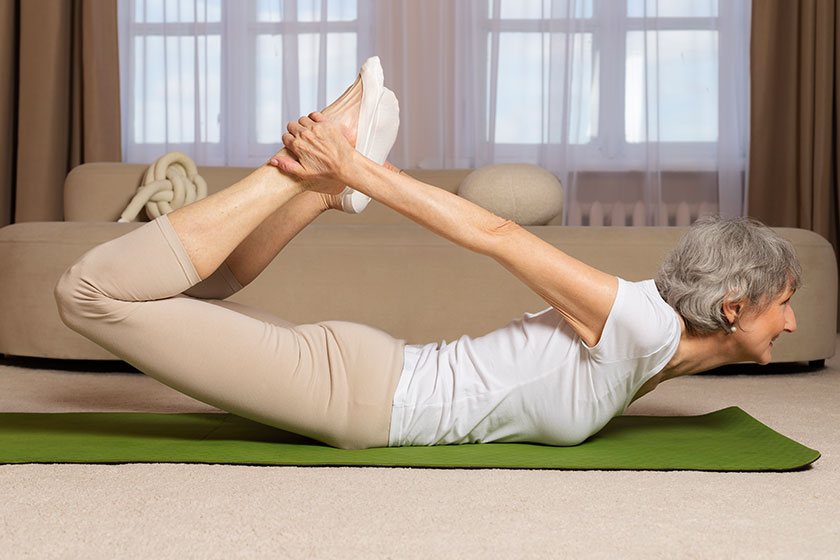If you’re experiencing sciatica pain, you know how debilitating it can be. The good news is that there are specific exercises for sciatica pain for seniors that can help alleviate discomfort and improve mobility. In this guide, let’s learn about the top 5 effective exercises you can incorporate into your daily routine to find relief from sciatica pain.
Pelvic Tilts
Pelvic tilts are a gentle exercise that can help alleviate sciatica pain by stretching and strengthening the muscles in your lower back and pelvis.
To perform pelvic tilts, lie on your back with your knees bent and feet flat on the floor. Slowly tilt your pelvis upward, pressing your lower back into the floor, then release. Repeat this movement 10-15 times, gradually increasing the range of motion as tolerated.
Seated Spinal Twist
The seated spinal twist is an excellent exercise for relieving sciatica pain and improving spinal mobility.
Sit on a chair with your feet flat on the floor and your spine tall. Place your right hand on the back of the chair and your left hand on your right knee. Inhale as you lengthen your spine, then exhale as you gently twist your torso to the right, using your hands for support. Hold the stretch for 15-30 seconds, then repeat on the other side.
Hamstring Stretch
Tight hamstrings can exacerbate sciatica pain by putting pressure on the sciatic nerve.
To stretch your hamstrings, lie on your back with one leg extended straight up towards the ceiling and the other leg flat on the floor. Loop a towel or resistance band around the ball of your foot and gently pull towards you until you feel a stretch in the back of your thigh. Hold the stretch for 15-30 seconds, then switch legs.
Cat-Cow Stretch
The cat-cow stretch is a gentle yoga exercise that can help relieve tension in the spine and alleviate sciatica pain.
Begin on your hands and knees, with your wrists aligned under your shoulders and your knees under your hips. Inhale as you arch your back and lift your chest towards the ceiling (cow pose), then exhale as you round your spine and tuck your chin to your chest (cat pose). Flow between these two poses for 5-10 breaths.
Hip Flexor Stretch
Tight hip flexors can contribute to sciatica pain by pulling on the pelvis and compressing the sciatic nerve.
To stretch your hip flexors, kneel on the floor with one knee bent at a 90-degree angle and the other foot flat on the floor in front of you. Lean forward slightly, keeping your back straight, until you feel a stretch in the front of your hip. Hold the stretch for 15-30 seconds, then switch legs.
Experience Supportive Living at Our Retirement Community
Incorporating these effective exercises for sciatica pain into your daily routine can help alleviate discomfort and improve mobility, allowing you to enjoy a more active and pain-free lifestyle. Remember to listen to your body and start slowly, gradually increasing the intensity and duration of each exercise as tolerated.
Our Assisted Living community in Roanoke, VA understands the importance of maintaining mobility and comfort as you age. With a range of amenities and supportive services, including fitness programs and wellness initiatives, our community provides the perfect environment for the elderly looking to manage sciatica pain and enhance their overall well-being.
Book your tour today to learn more about how our retirement community can support you in living a fulfilling and active lifestyle despite sciatica pain.








